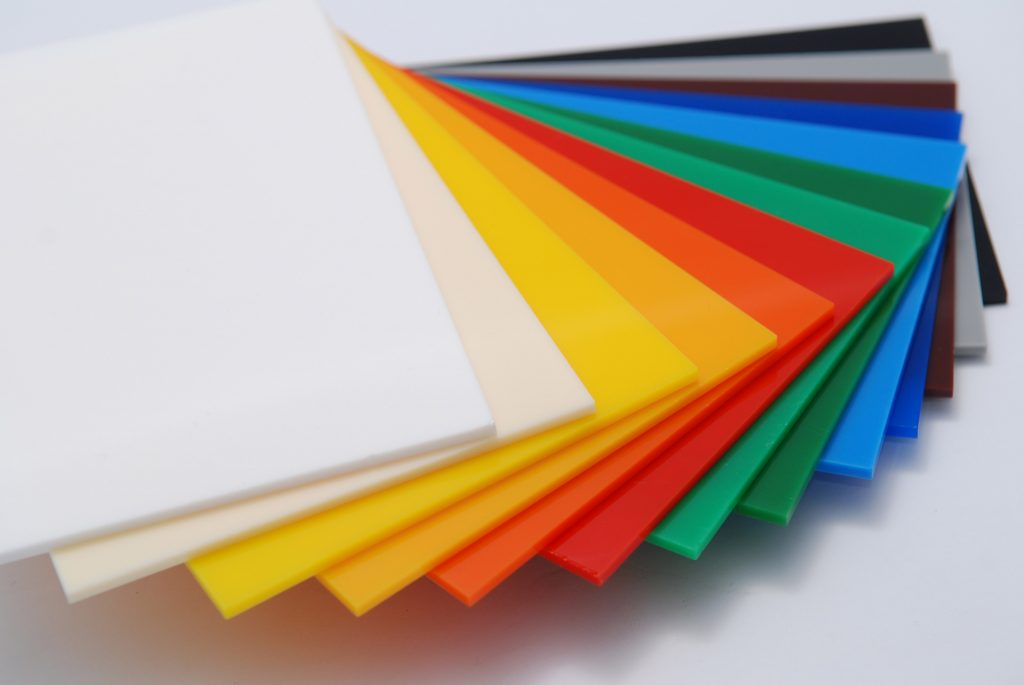Guides, Perspex Panels
Pros and Cons of Perspex Sheets

Pros and Cons of Perspex Sheets
Pros and Cons of Perspex Sheets – Acrylic is a purely synthetic material that is extremely versatile. There are a wide range of uses for this material from protective screens, windows, displays and simple home accessories. As with any material, there are positives and negatives to using these Perspex sheets.
Below are some Advantages and Disadvantages of Perspex Sheets.
Advantages of Perspex Sheets
A Wide Variety of Colours
Perspex Sheets are available in a huge range of colours and finishes. There are hundreds of colours that can be made custom for various projects. Also, finishes such as Gloss, Frosted, Tints and Glitters are available. This gives people the opportunity to create a wide range of products and let their imagination run wild. Combining different colours and finishes creates wonderful effects. This wide range of colours is useful for matching or creating branding. Whether it be a small business or a worldwide name, the perfect tone can be found. Finally, there are a variety of thicknesses of acrylic ranging from 2mm all the way up to 100mm. Again creating opportunities for fabricators and designers to produce new products.
Explore our Colour Swatches Page for more information
Reusable
As it is a synthetic material, acrylic can be reused as products. Such as laser cut jewellery, signage, homeware and more. Any offcuts can also be sold online to reuse waste material. Providing online craft sellers with materials for projects and products. This the most eco-friendly solution for spare sheets. Perspex have stated that they never send any acrylic material to a land fill.
Explore our Sustainability Page for more information
Easy to Clean
Acrylic sheets and products are fairly easy to clean, with the right products. One of the best ways to clean your acrylic is to use soapy water with a micro-fibre cloth. Using washing up detergent will create a soapy lather, whilst the micro-fibre cloth will deal with any dirt that is sitting on the panel. Also, if possible, handling the edges of the panel rather than the face. This also prevents scratching and any fingerprints on the face.
Things to Avoid
Never use a scouring pad or anything abrasive to scrub your acrylic. This will leave scratches that you will be unable to buff out. Do not use any harsh chemicals such as bleach on the panels as this can make them craze. These will also damage the surface and leave it looking discoloured and unloved.
Pliable
Perspex sheets can be heated and formed due to its elastic nature. It is flexible and can be easily moulded into any shape. This is perfect for projects such as lighting, furniture, screens, decorative items and more. There are a variety of techniques that can be used to work with the material and get it to the shape required. Techniques include Dome Blowing, Line Bending and Drape Forming to name a few.
Disadvantages of Perspex Sheets
Difficult to Recycle
As acrylic is a synthetic material, it is recyclable but not bio-degradable. Meaning that to get it back to its raw state, it must be ground down. Then outsourced abroad to transform it back to its original state. This process takes months and can be extremely costly. Other ways to recycle material would be to use offcuts for smaller projects. This ensures all materials sold or reused before being recycled. Did you know: Perspex recycle over 600 tonnes of production waste per year – this is distilled back to MMA and returned into the production process.
Sustainability
Environmental sustainability is something that the industry is working on consistently. Though acrylic is not a throw away, single use material. There are still areas to improve Perspex sheets sustainability. Reducing the impact on the environment. From sheet production to packaging, there are many areas which are developing to ensure that Perspex is as sustainable as it can be.
Explore our Sustainability Page for more information
Easily Scratched
Though the best of care can be taken throughout a project, the likelihood of scratching is very high. Even the lightest of scratches can ruin the look. You can use soft, micro-fibre or lint-free cloths to gently wipe down the surface of the material. In addition, some slightly warm soapy water can be used to create a lather, removing any stubborn dirt. Also when handling the material, you should try to only touch the edges, preventing the face from scraping.
When choosing the materials for your project, the finish is very important. Gloss finishes are much more likely to scratch than ones such as frosted. If you would like any advice or guidance on the type of material to use, please do not hesitate to contact our team.
Not Fire Resistant
Though acrylic is heat resistant up to 160 degrees. Perspex sheets melt at high temperatures or from exposure to direct flames. This makes it extremely dangerous to use in areas where there is a risk of fire. These materials can be rated for fire. But despite this rating, they will still burn.
“Perspex is a combustible material and if ignited will continue to burn. However, unlike many other plastic materials, burning Perspex produces very little smoke, an important fire safety benefit.” – Perspex
For more information about Pros and Cons of Perspex Sheets, explore Perspex’s technical library.
